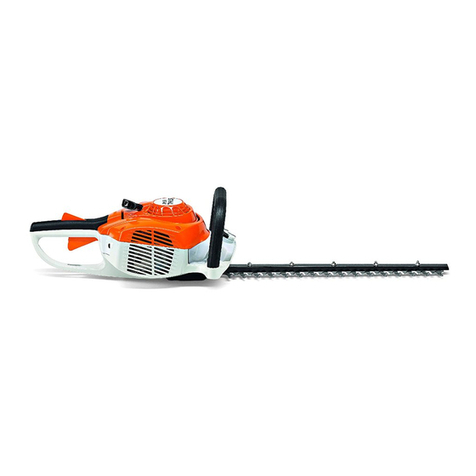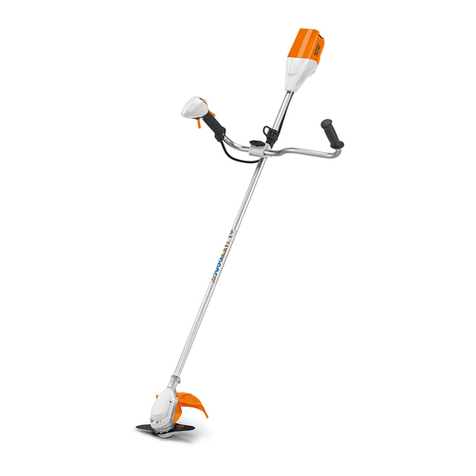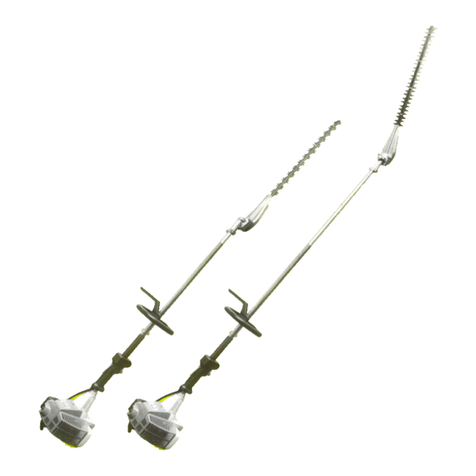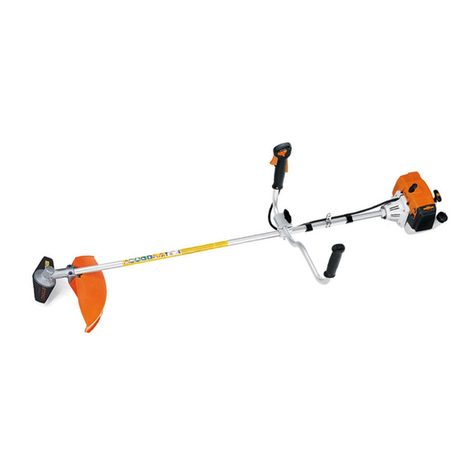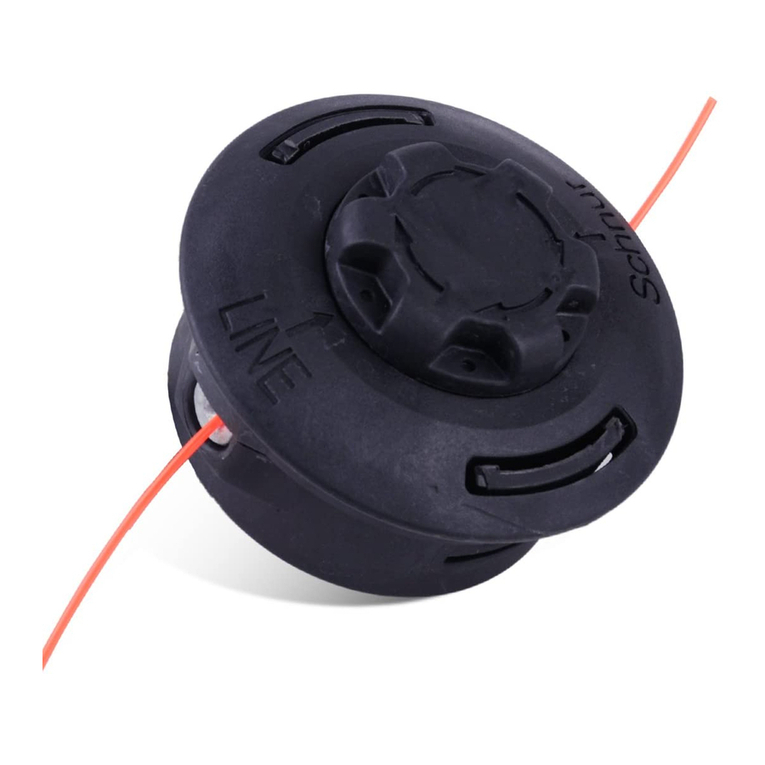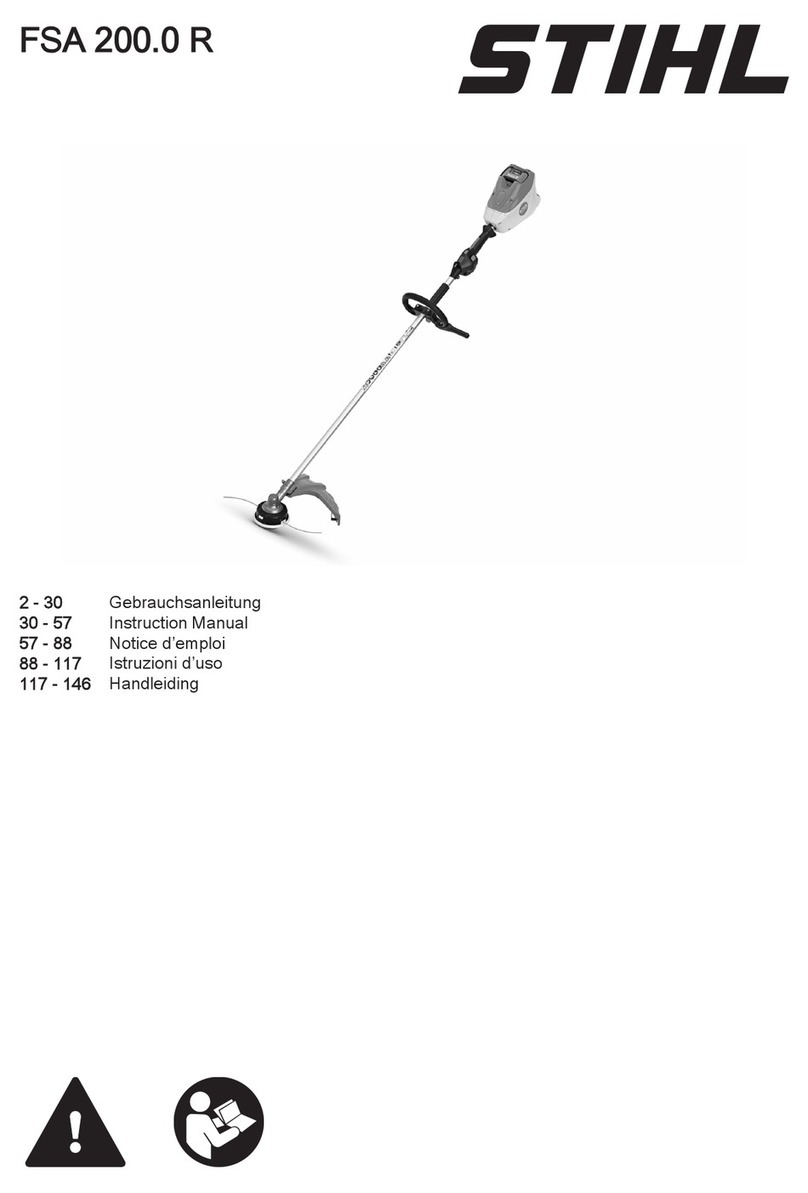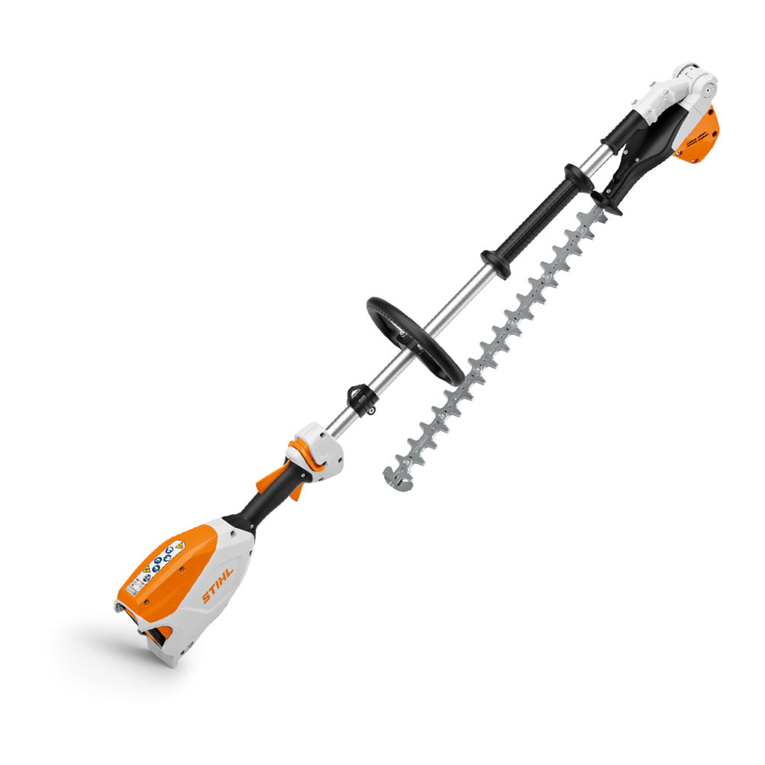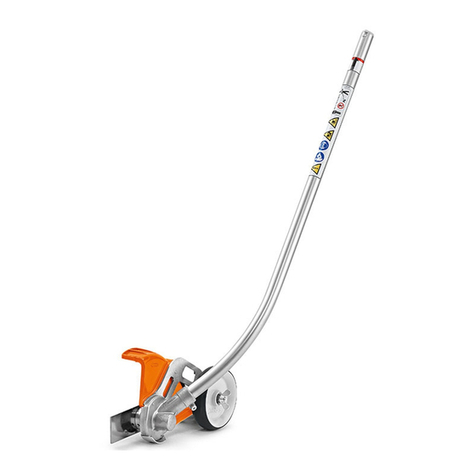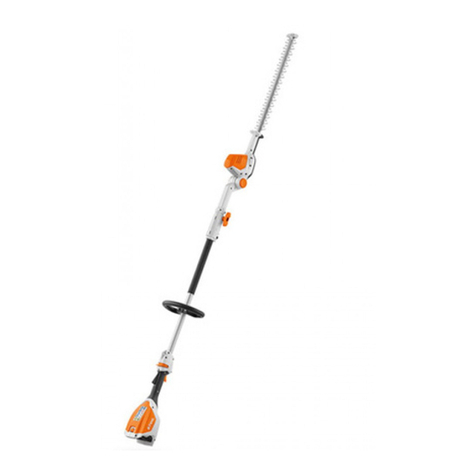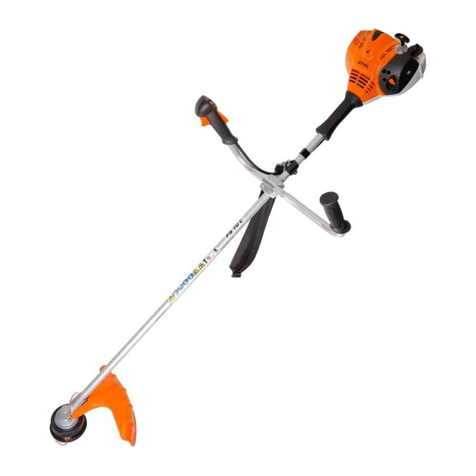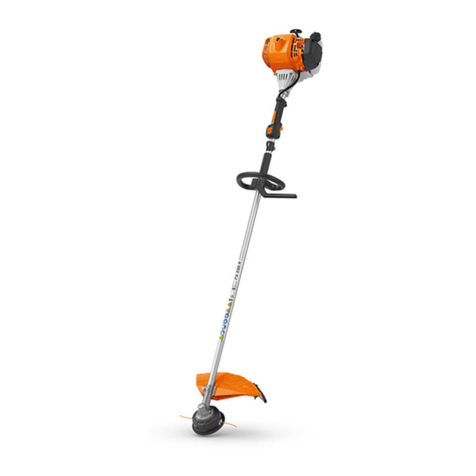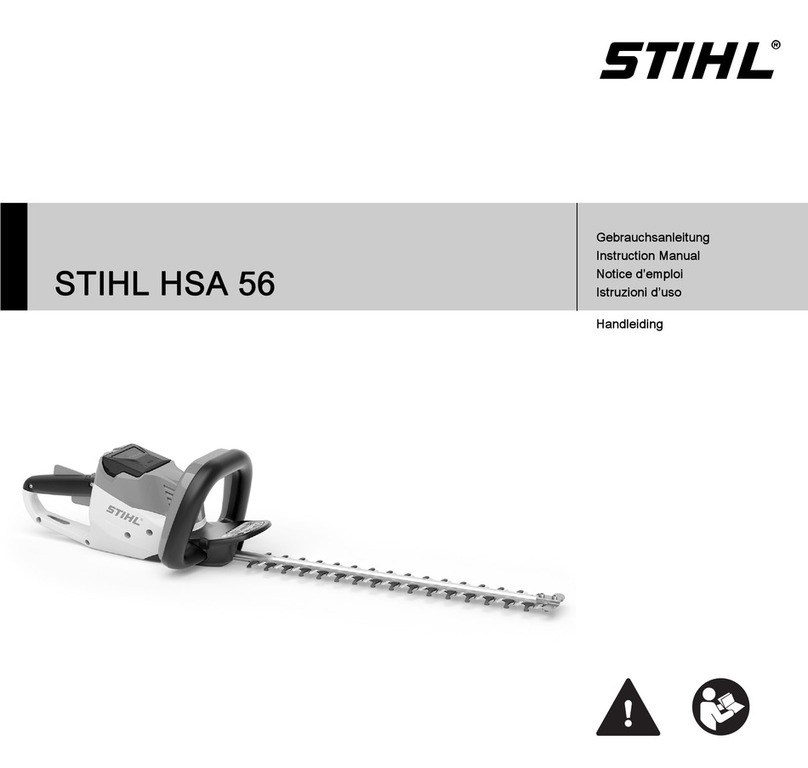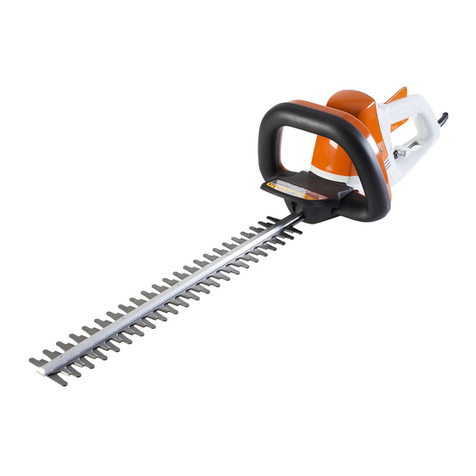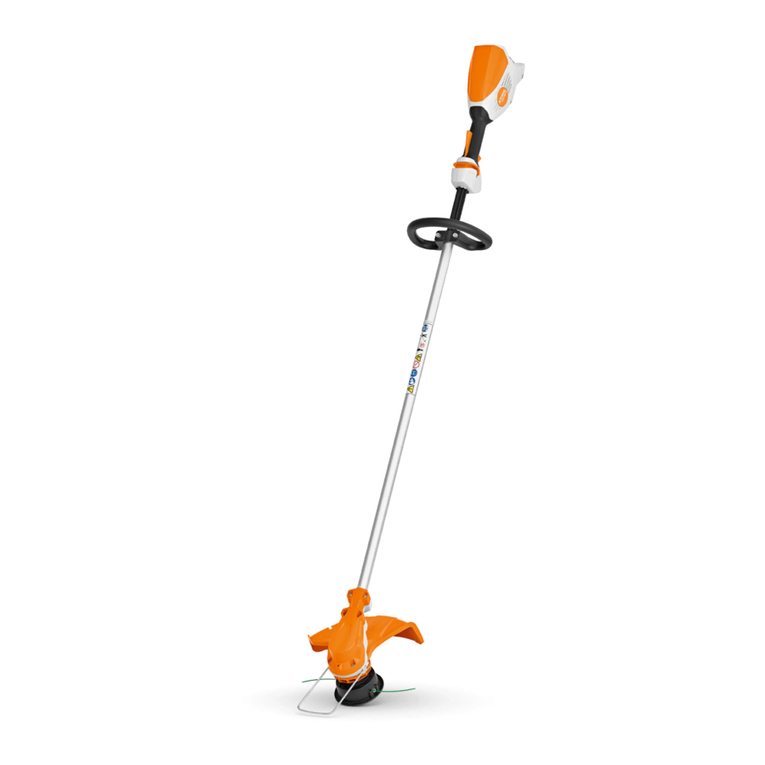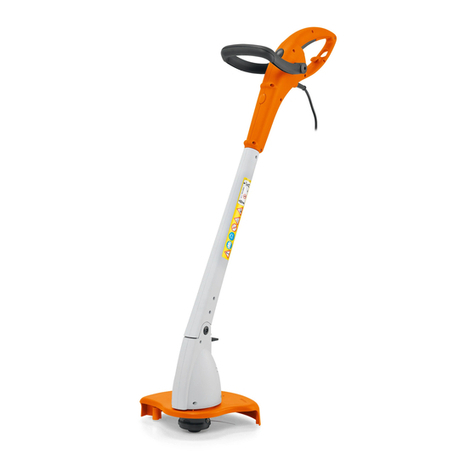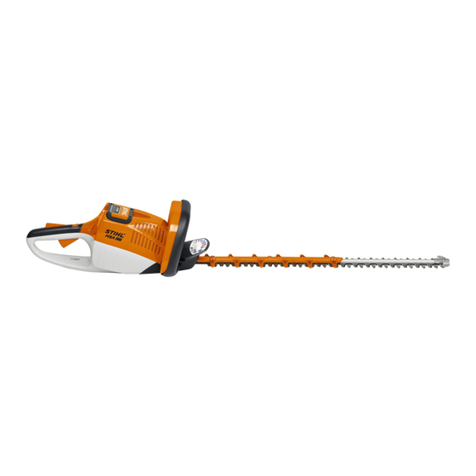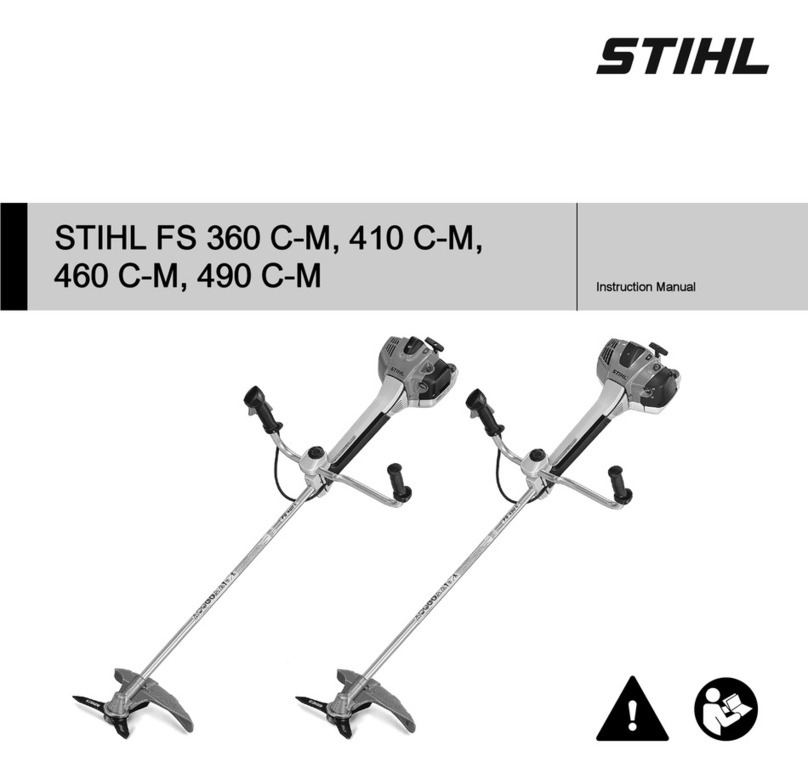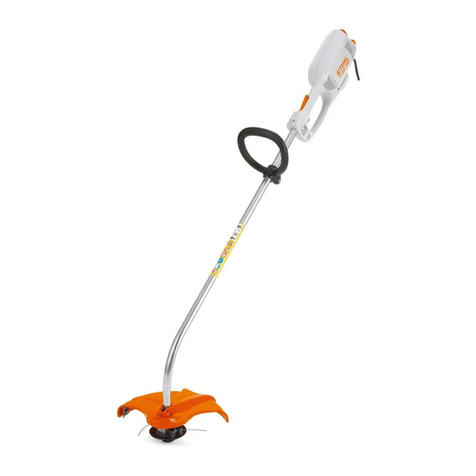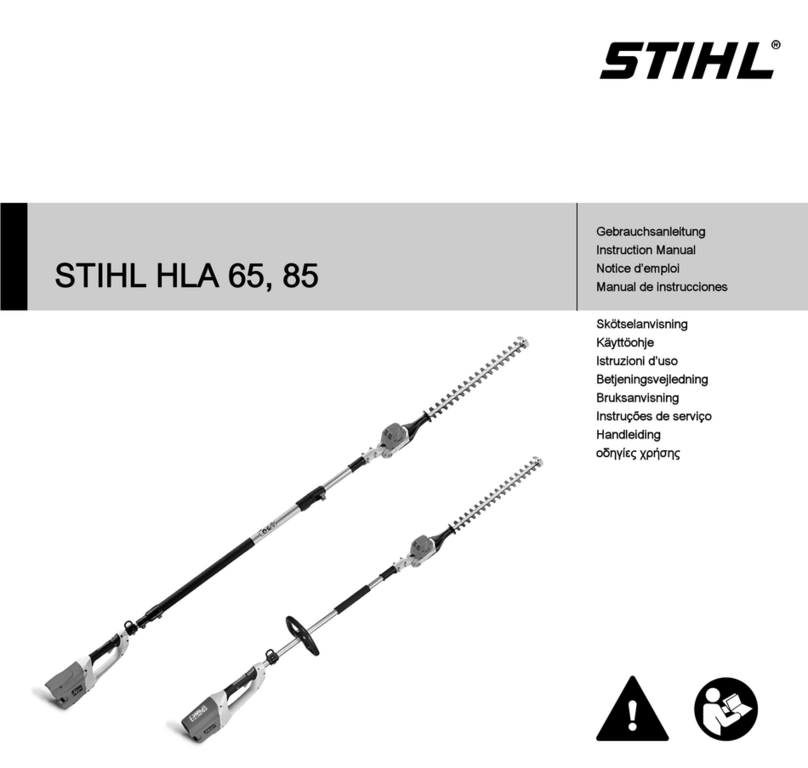FSA 65, FSA 85
English
6
To reduce the risk of personal injury ,
do not allow any other persons within a
radius of 15 meters of your own position.
To reduce the risk of damage to
property, also maintain this distance
from other objects (vehicles, windows).
Do not leave the machine outdoors in
the rain.
Do not cut wet grass.
Take special care in slippery conditions
– damp, snow, ice, on slopes or uneven
ground.
Watch out for obstacles: Roots, tree
stumps or holes which could cause you
to trip or stumble.
To reduce the risk of accidents, take a
break in good time to avoid tiredness or
exhaustion.
Work calmly and carefully – in daylight
conditions and only when visibility is
good. Stay alert so as not to endanger
others.
If your power tool is subjected to
unusually high loads for which it was not
designed (e.g. heavy impact or a fall),
always check that it is in good condition
before continuing work – see also
"Before Starting Work". Make sure the
safety devices are working properly. Do
not continue operating your power tool if
it is damaged. In case of doubt, have the
machine checked by your servicing
dealer.
Special care must be taken when
working in difficult, over-grown terrain.
The dust that occurs during operation
may be harmful to health. If dust levels
are very high, wear a suitable respirator.
Before leaving the power tool
unattended: Switch off the power tool,
move the retaining latch to ƒand
remove the battery.
Check the cutting attachment at regular
short intervals during operation or
immediately if there is a noticeable
change in cutting behavior:
–Switch off the motor, move the
retaining latch to ƒand wait for the
cutting attachment to come to a
standstill, remove the battery.
–Check condition and tightness, look
for cracks.
Clean grass and plant residue off the
cutting attachment mounting at regular
intervals – remove any build up of
material from the cutting attachment and
deflector.
To replace the cutting attachment,
switch off the power tool, move the
retaining latch to ƒand remove the
battery. This avoids the risk of injury
from the motor starting unintentionally.
Never continue using or attempt to
repair damaged or cracked cutting
attachments.
This may cause parts of the cutting
attachment to come off and hit the
operator or bystanders at high speed
and result in serious or fatal injuries.
Use only the deflector with properly
mounted line limiting blade to ensure the
mowing lines are automatically trimmed
to the approved length.
After Finishing Work
Always clean dust and dirt off the power
tool – do not use any grease solvents for
this purpose.
Vibrations
This power tool is minimizes the
vibrations transmitted to the operator's
hands.
The drive motor is not
waterproof. Never work
with the power tool in the
rain or in wet or very
damp locations.
15m (50ft)
To reduce the risk
of injury from
thrown objects,
never operate the
unit without the
proper deflector for
the type of cutting
attachment being
used.
Inspect the work area:
Stones, pieces of metal
or other solid objects can
be thrown and cause per-
sonal injury or damage
the cutting attachment
and property (e.g. parked
vehicles, windows).
